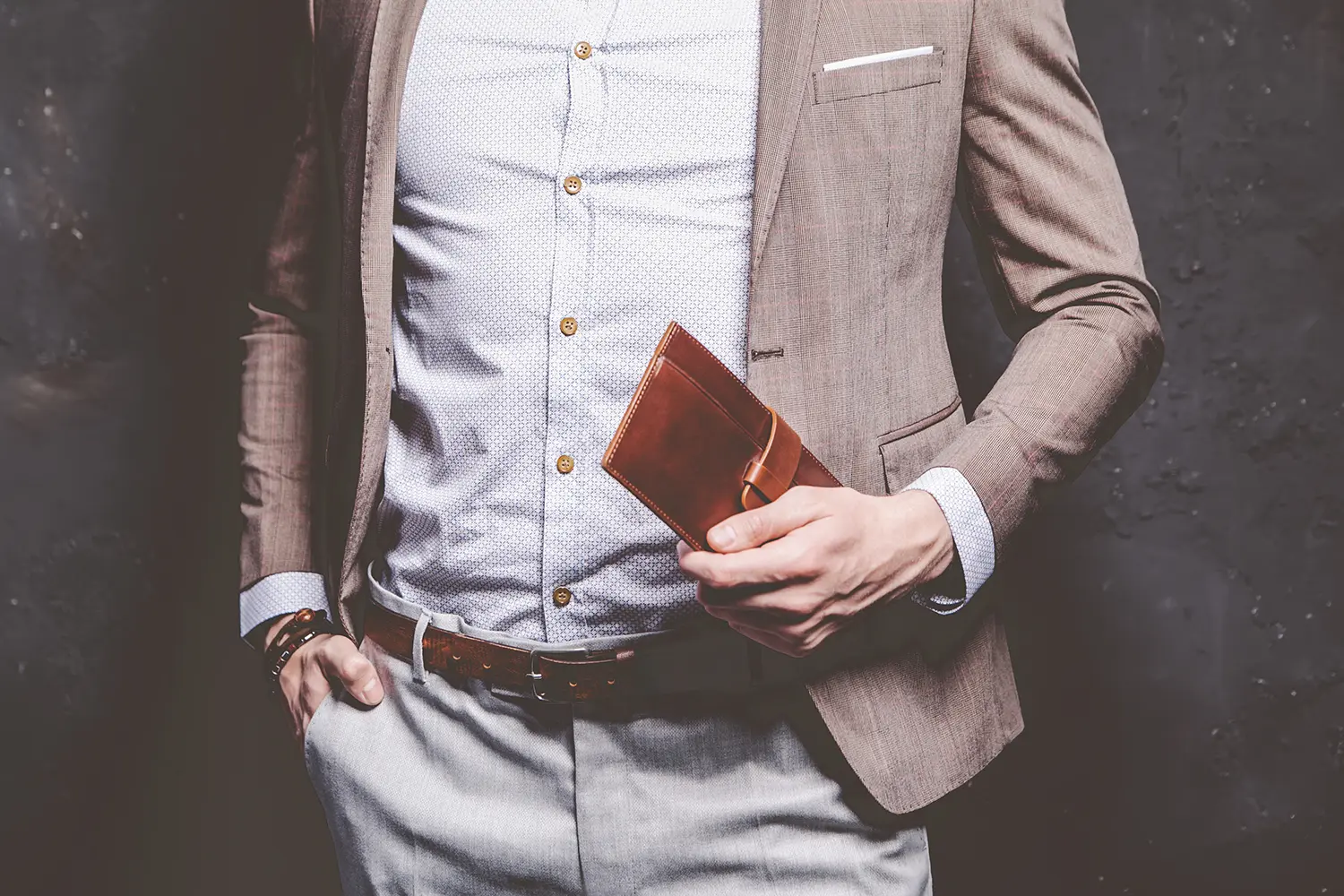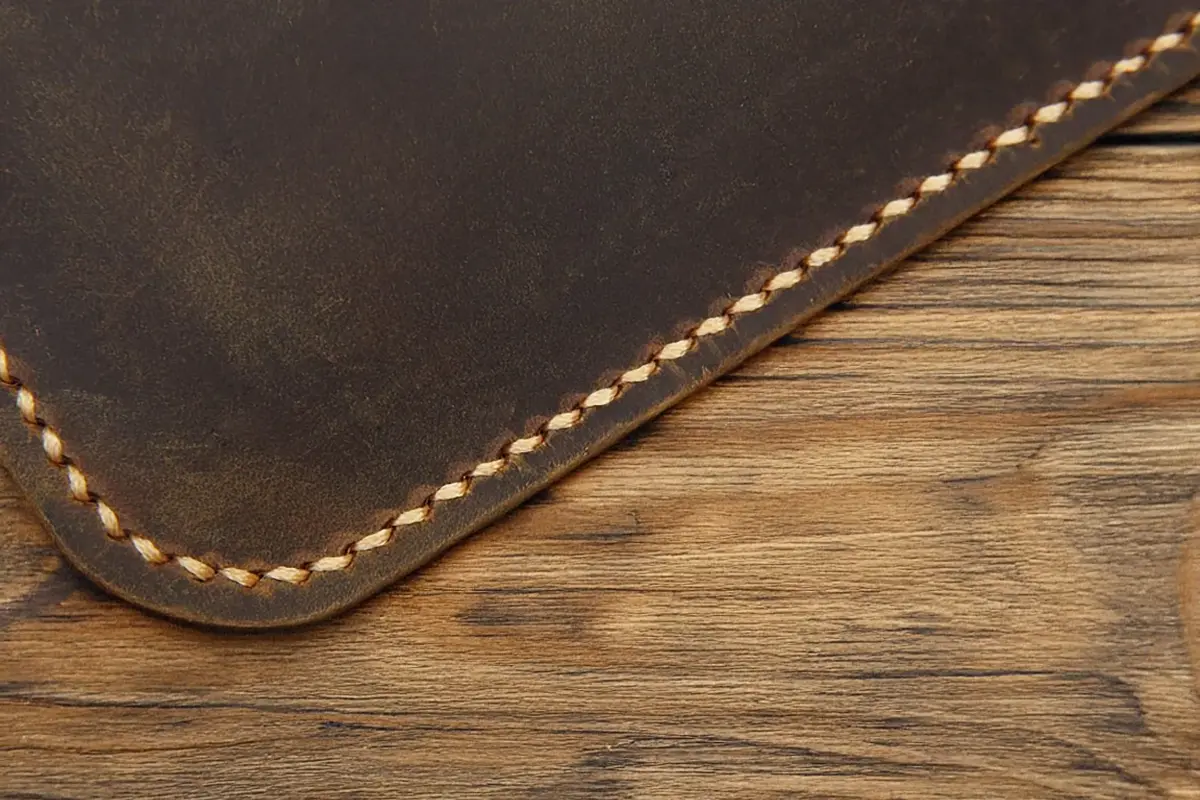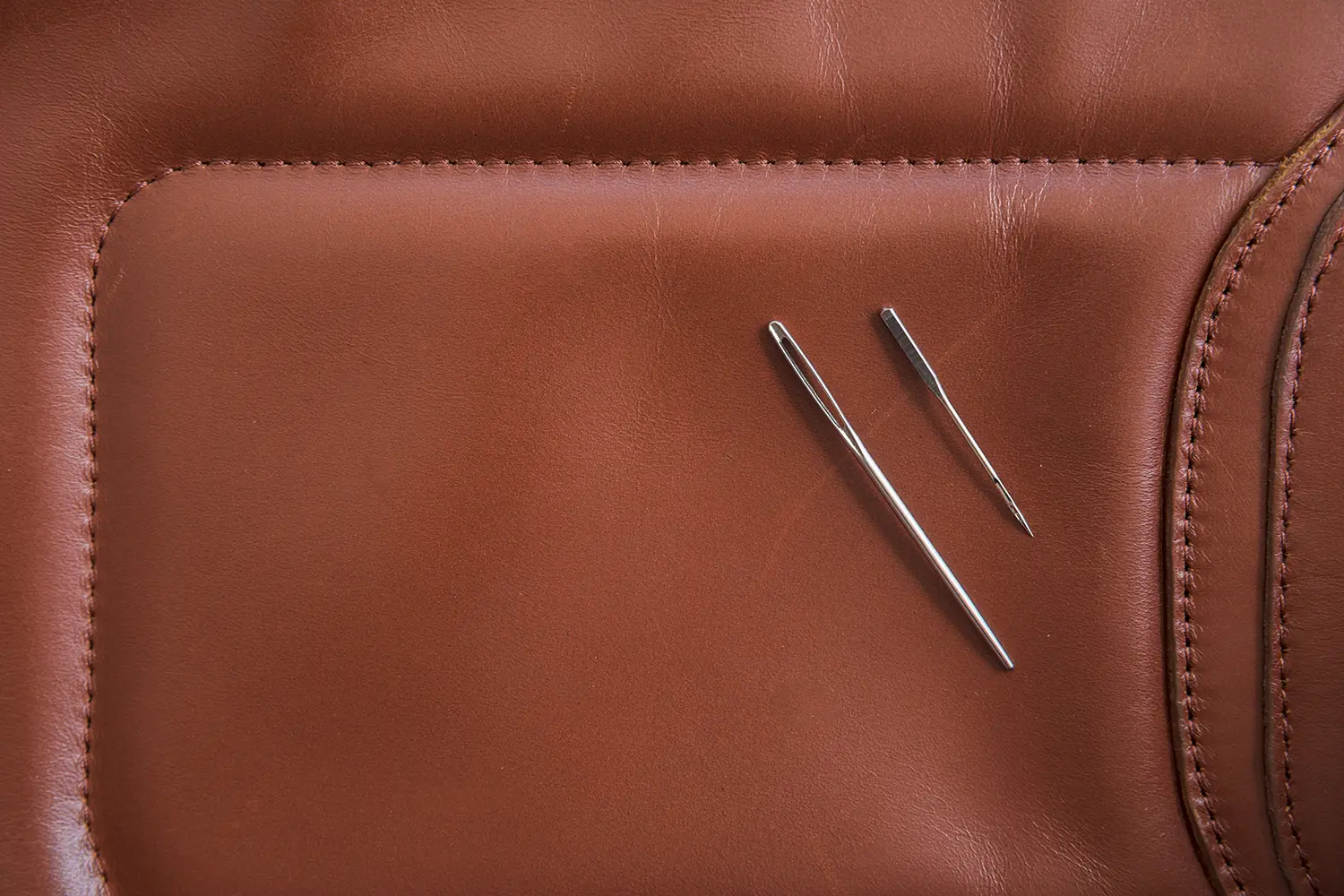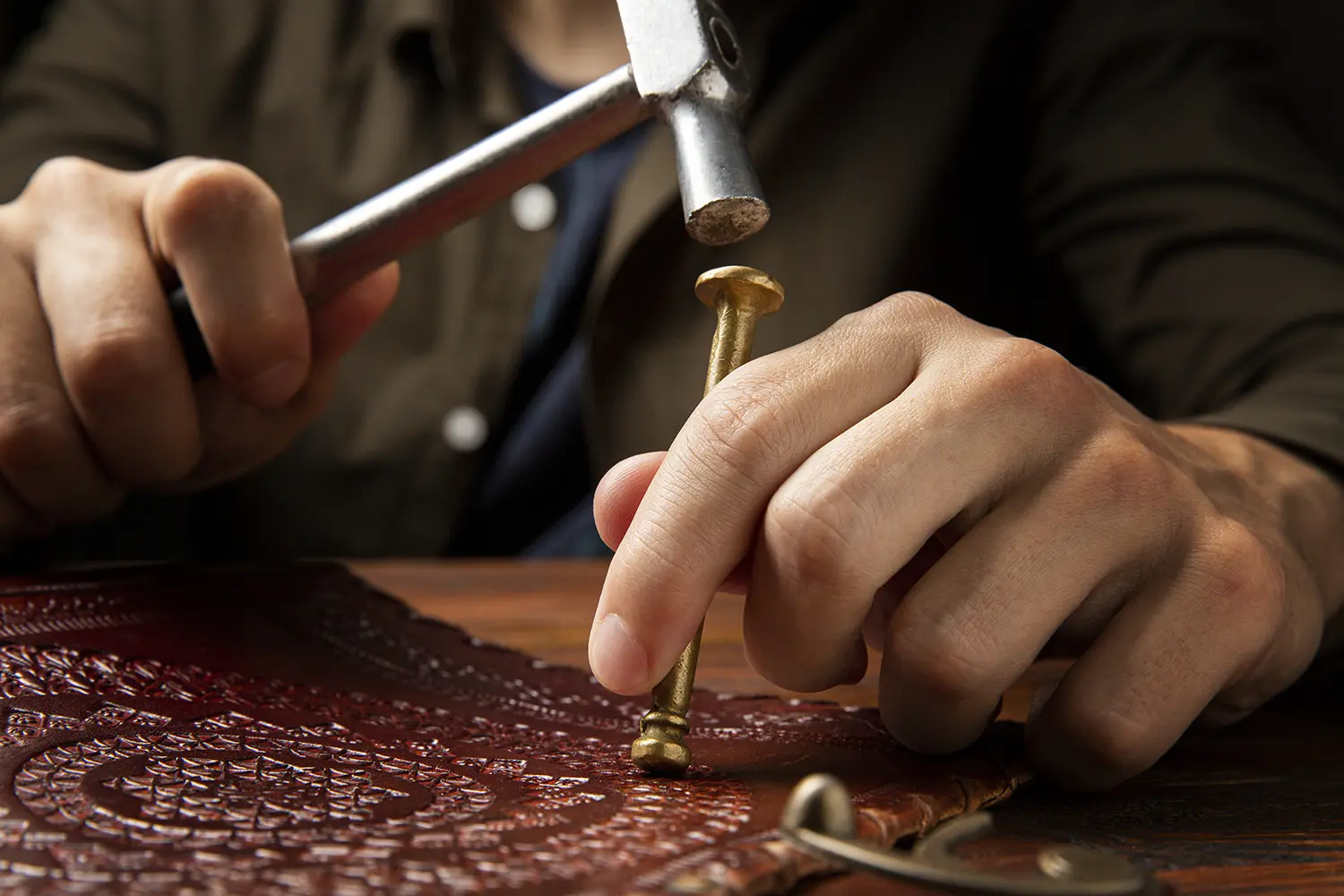
The Ultimate Guide to Choosing a Handmade Leather Wallet for Everyday Wear
Welcome to the world of slow craft, where accessories aren’t just objects—they’re trusted companions that improve with age.
In the fast-paced modern world, we use our wallets more than almost any other item. It’s a tool, a keeper of essentials, and a silent reflection of personal style. Yet, too many people settle for cheap, mass-produced options that start falling apart within a year.
If you’re reading this, you’re looking for something better: a handmade leather wallet built for the long haul. You’re searching for durability, character, and that satisfying feeling of owning an investment piece. You’re ready to upgrade to an accessory that doesn’t just carry your cards but becomes a part of your legacy.
This comprehensive guide will walk you through everything you need to know. We’ll dissect the difference between machine-made and artisan-crafted stitching, break down the critical grades of leather, and show you exactly what to look for to ensure your new wallet lasts a lifetime of everyday wear.
Why the Handmade Difference Matters: Quality, Ethics, and Legacy

When you choose a handmade leather wallet, you’re not just selecting a style; you’re selecting a superior standard of construction. The “handmade” label guarantees a level of attention to detail that industrial machinery simply cannot replicate.
Machine-Made vs. The Indestructible Saddle Stitch
The single most significant difference between mass-produced and handmade leather wallets is the stitching technique.
- The Machine Lockstitch: Most commercial leather goods use a lockstitch machine. This stitch is fast, but it has a fundamental weakness: it relies on two threads locking together in the center. If just one loop of this stitch breaks (which is common after constant friction from being taken in and out of a pocket), the entire line can unravel like a zipper. This is the primary reason why factory-made wallets often start falling apart at the seams first.
- The Hand-Sewn Saddle Stitch: Artisan leatherworkers use the legendary saddle stitch, employing two needles to pass threads through the same hole, crossing and locking them around each other. The result? Every single stitch is independent. If one stitch breaks due to extreme wear, the ones on either side hold firm. This structural integrity makes the hand-sewn seam virtually indestructible—the leather itself will wear out before the stitching does. For an item subjected to daily folding, stretching, and friction, this quality is non-negotiable.
Supporting the Artisan: More Than Just a Purchase
Beyond the physical superiority, buying a handmade wallet is an ethical and economic choice.
- Attention to Detail: Artisans don’t work on quotas. They carefully inspect every cut, punch every hole, and control the tension on every stitch. This meticulous process eliminates the subtle flaws (like uneven tension or misaligned pockets) that often plague high-volume production.
- Ethical Sourcing and Production: By supporting small, independent makers, you are often supporting ethical labor practices and sustainable material sourcing, rather than contributing to the environmental and social costs of fast fashion.
- A Piece of Art: A handmade wallet carries the subtle, unique marks of the person who created it. It’s an original, not a clone, allowing you to carry a piece of functional art everywhere you go.
Leather Grades: The Non-Negotiable Foundation of Durability
The material itself is the bedrock of a long-lasting wallet. If the leather is low-quality, no amount of perfect stitching can save it. Understanding leather grades is the most important step in making a smart investment.
Full Grain Leather: The Gold Standard (Patina Explained)
If you want a wallet that genuinely lasts 50+ years and improves with age, you must look for Full Grain Leather.
- What it Is: Full grain is the highest quality grade available. It comes from the top layer of the animal hide and includes all the natural grain, texture, and imperfections. The leather is not sanded or buffed to remove marks. This dense, natural structure is what gives it its exceptional strength and fiber durability.
- Why it’s Superior: Because the strongest part of the hide is left intact, it is the most durable, breathable, and water-resistant leather available.
- The Beauty of Patina: Full grain leather is famous for developing a patina. Patina is the soft sheen and darkening that occurs over time from oils in your hand, sunlight, and friction. It is a protective layer and a visual record of your life—the marks, scuffs, and darkening colors are what give the wallet its unique character and transform it from a simple accessory into a cherished, personalized heirloom.
Top Grain vs. Genuine: Know What You’re Buying
Beware of misleading labels when searching for your wallet.
- Top Grain Leather: This is the second-highest quality. It is similar to full grain but has had the outermost layer of the natural grain slightly sanded or buffed away to remove blemishes. This makes the leather more pliable and uniform, but it sacrifices a small amount of its ultimate strength and character compared to full grain. It’s still a very good, durable choice.
- Genuine Leather: This is the most confusing and misleading term. “Genuine” is not a grade of quality; it’s a statement of material. It means the product contains real leather, but often refers to leather made from the bottom layers of the hide that have been heavily treated, bonded with fillers, or coated with an artificial finish to mimic a higher-quality look. While affordable, a genuine leather wallet will rarely develop a rich patina and will likely degrade and crack much sooner than full or top grain.
The take-away: Always prioritize Full Grain Leather for your everyday wallet.
Decoding Quality: What to Inspect Before You Buy
You can assess a handmade wallet’s quality—even online—by knowing where to direct your focus.
Stitching, Edges, and Hardware: The Tell-Tale Signs of Craftsmanship
- Stitching: As established, look for the saddle stitch. If a maker boasts about hand-stitching, they are usually proud to explain why (i.e., the saddle stitch). Visually, the stitch line should be slightly angled, perfectly straight, and the tension must be uniform from start to finish.
- Edges: The edges of a high-quality leather wallet should be burnished or finished with edge paint. Burnishing is the process where the artisan smooths, sands, and compresses the raw edge fibers using heat and wax/water until they are fused into a smooth, glass-like, polished seal. An unfinished, fuzzy edge indicates a rushed product that will quickly fray and absorb moisture.
- Hardware: Look at the zippers, snaps, and rivets. Are they cheap plated metal, or solid brass, copper, or stainless steel? Quality makers invest in quality solid brass or copper hardware because they are corrosion-resistant and age beautifully alongside the leather.
The Smell Test: Real Leather vs. Chemicals
A genuine, high-quality leather wallet should have a rich, earthy, distinct smell. It should smell natural and organic. If the wallet has a strong, pungent, or chemical odor—especially a sticky plastic scent—it is likely coated with a heavy polymer finish or is a lower-quality split hide that has been heavily corrected. The smell of true, well-tanned leather is one of the joys of owning it.
Harika. İşte 1500 kelimelik SEO makalesinin kalan bölümleri: Cüzdan Stilleri, Bakım, Yatırım Perspektifi ve Sonuç.
Bu kısımla birlikte, makaleniz tam ve kapsamlı bir rehber haline gelecektir.
Finding Your Perfect Companion: Styles for Every Lifestyle
A handmade leather wallet is more than just material and stitching; it’s a specific solution to carrying your everyday necessities. Choosing the right style is crucial for comfort and functionality.
The Classic Bifold Wallet: Timeless Functionality
The bifold wallet remains the most popular design globally, and for good reason. It offers the perfect blend of capacity and portability, folding in half to secure contents.
- Pros: Excellent balance for carrying cash and cards; feels traditional and professional; fits easily into back pockets or jacket pockets.
- Cons: Can become bulky if overstuffed (a condition often referred to as “Costanza Wallet Syndrome”).
- The Handmade Advantage: Artisan bifolds are often designed with clever, hidden card slots and are typically sized slightly smaller than mass-market options, encouraging a minimalist approach while still offering ample room.
Minimalist Card Holders: The Modern Essentials
The rise of digital payments has accelerated the popularity of the sleek, minimalist design. A card holder (or card sleeve) is ideal if you carry mostly plastic and only a few folded bills.
- Pros: Incredibly slim and lightweight; disappears into a front pocket (excellent for security); enforces strict adherence to only essential cards.
- Cons: Limited capacity for cash; not ideal for travelers who need to carry multiple currencies or receipts.
- Best For: Urban professionals, frequent travelers, or anyone dedicated to the minimalist movement. Look for designs that use tension or overlapping leather to secure cards without excessive stitching.
Hybrid and Unique Designs (The Trifold Debate)
While the bifold and card holder dominate, other specialty styles serve unique needs:
- Trifolds: These fold in two places, offering maximum capacity. While great for organizing many cards and documents, they are inherently the bulkiest option, even when empty. Tip: For everyday wear, most artisans recommend a quality bifold over a trifold, as the extra folds put unnecessary stress on the stitching and leather.
- Money Clip Wallets: A hybrid that uses a metal or leather strap clip to hold cash, often paired with a small card sleeve. This is a great middle-ground for those who still use cash but want a slim profile.
The right style is the one that forces you to carry only what you truly need, preventing the wallet from becoming a bulky annoyance.
Longevity and Care: Making Your Wallet an Heirloom
One of the biggest benefits of investing in a full grain handmade leather wallet is its incredible longevity. With minimal effort, you can ensure it lasts not just years, but decades.
How to Clean and Condition Your Leather Wallet
Leather is skin, and like your own skin, it needs moisture to prevent drying out and cracking.
- Cleaning: Once or twice a year, gently wipe the exterior with a slightly damp cloth to remove surface dirt and grime. Avoid soaking the leather.
- Conditioning: Apply a small amount of high-quality leather conditioner or balm (beeswax-based products are excellent) using a clean, soft cloth.
- The Process: Work the conditioner into the leather in small, circular motions. The leather should absorb the product; wipe off any excess residue immediately. Conditioning replenishes the oils lost during use, keeping the leather supple and preventing the stitching holes from drying out. Remember: Less is more. Over-conditioning can make the leather too soft and sticky.
Managing the Patina Process
The patina is your wallet’s story, but you can guide its development.
- Daily Consistency: The most beautiful patinas come from consistent, everyday use—carrying it in the same pocket every day is better than leaving it on a dresser. The natural oils from your hands are the best conditioner.
- Sun Exposure (Controlled): Leather will darken naturally over time from UV rays. If you notice one side is much lighter than the other, occasionally leave your wallet open near a window (out of direct, harsh sun) for a few hours to help the color even out.
A well-patinaed wallet is a badge of honor, signifying years of reliability and classic style.
The Investment Perspective: Cost vs. Lifespan
Is a handmade leather wallet worth the higher upfront cost? Absolutely.
As noted in the original article, quality wallets typically range from $30 to $100+. However, a true full grain, hand-stitched wallet from an artisan often sits in the $80 to $250+ range, depending on the complexity of the design and the type of leather used (e.g., exotic hides).
- Cost Per Year: A mass-produced wallet costing $40 and lasting 2 years costs you $20 per year. A handmade wallet costing $150 and lasting 20 years (a conservative estimate) costs you just $7.50 per year. When viewed through the lens of longevity, the handmade piece is a clear financial winner and a far more sustainable purchase.
- Emotional Value: The “investment” isn’t just financial. It’s an investment in durability, sustainability, and personal style. You buy it once, and you bond with it forever.
Conclusion: Your Wallet, Your Story
Choosing a handmade leather wallet for everyday wear is a decision to step away from the disposable culture and embrace true quality. It’s a decision to buy once and buy well.
By prioritizing full grain leather for maximum durability, demanding the indestructible saddle stitch for structural integrity, and choosing a style that truly fits your essentials, you are equipping yourself with a companion built to tackle the rigors of modern life.
This is more than an accessory; it’s an heirloom in the making. Your handmade leather wallet will fade, soften, and darken perfectly with every passing year, becoming a unique and irreplaceable reflection of your personal journey. Stop replacing—start investing. Your story is waiting to be written.


